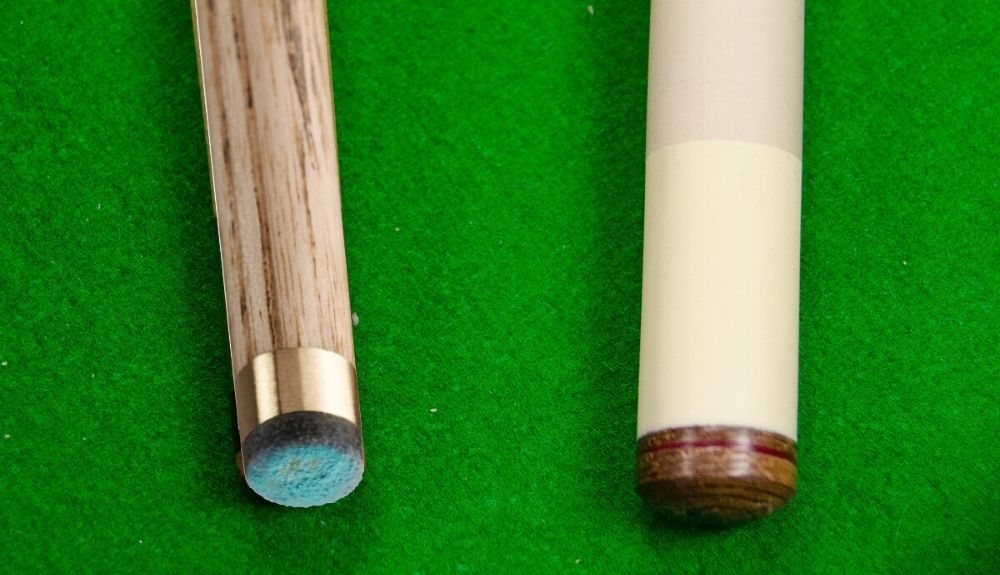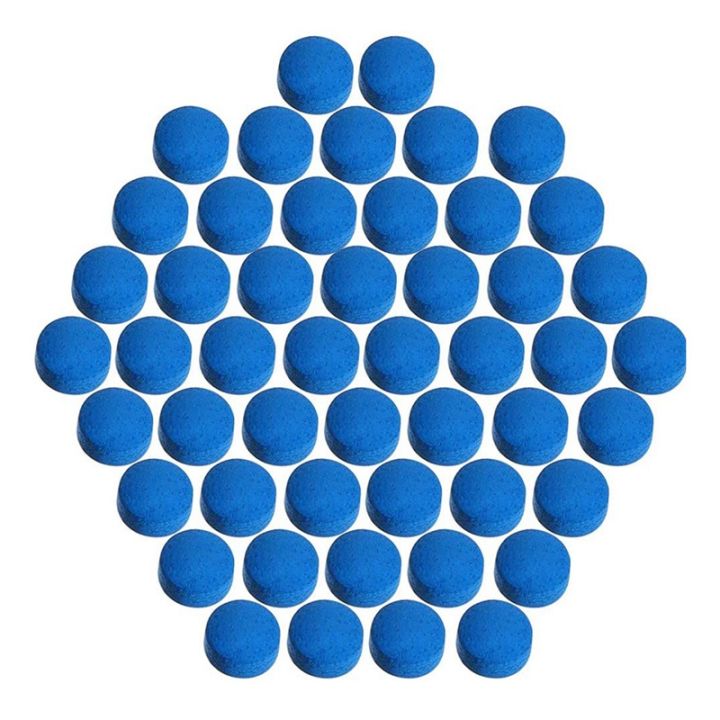Mastering The Game: Exploring Types Of Pool Cue Tips For Every Player
Have you ever wondered what makes a perfect pool shot? Well, it’s not just about your skills—it’s also about your gear. The types of pool cue tips play a crucial role in how you strike the ball, control your shots, and ultimately win the game. Whether you're a casual player or a competitive pro, understanding the nuances of these tips can elevate your game to the next level.
Let’s face it—choosing the right pool cue tip can feel overwhelming. There’s a whole world of options out there, each designed for specific playing styles and preferences. From leather to synthetic materials, the variety is vast. But don’t sweat it! This guide will break down everything you need to know about the types of pool cue tips so you can make an informed decision.
Now, buckle up because we’re diving deep into the world of pool cue tips. By the end of this article, you’ll have a solid understanding of what makes each type unique and how they can impact your game. So, whether you’re looking to upgrade your equipment or just curious about the science behind the perfect shot, you’re in the right place.
Read also:Prince Harry And Meghan Markles Royal Wedding Drama A Closer Look
Understanding the Basics of Pool Cue Tips
Before we dive into the different types of pool cue tips, let’s take a moment to understand what they are and why they matter. A pool cue tip is the small piece of material attached to the end of your cue stick that comes into contact with the cue ball. It might seem like a small detail, but it plays a massive role in how you control the ball, apply spin, and execute your shots.
Think of it this way: your cue tip is like the tires on your car. The wrong type can lead to poor handling, while the right one gives you precision and confidence. Depending on the material, shape, and hardness of the tip, your shots can vary dramatically. That’s why it’s essential to choose the right one based on your playing style.
Why Are Pool Cue Tips Important?
Here’s the deal—your cue tip affects three critical aspects of your game:
- Control: A high-quality tip allows you to control the cue ball with precision, ensuring your shots land exactly where you want them.
- Spin: Different tips offer varying levels of friction, which can help you apply English, draw, or follow shots with ease.
- Consistency: A durable tip means fewer replacements and more consistent performance over time.
So, whether you’re aiming for a clean bank shot or trying to execute a tricky jump shot, your cue tip is your secret weapon. Let’s explore the different types and find the one that suits your game.
Types of Pool Cue Tips: A Comprehensive Guide
Now that we’ve covered the basics, let’s get into the nitty-gritty of the different types of pool cue tips. From traditional leather to modern synthetic options, each type has its own set of advantages and disadvantages. Here’s a breakdown of the most popular choices:
Leather Pool Cue Tips
Leather tips are the go-to choice for most players, thanks to their versatility and affordability. They come in various grades, ranging from soft to hard, each offering a unique feel and performance. Let’s take a closer look:
Read also:Chrissy Teigen Shares Baby Boy Ultrasound With A Dash Of Humor
- Soft Leather Tips: These tips are great for players who rely on spin. They provide excellent grip on the cue ball, making it easier to apply English and finesse your shots.
- Medium Leather Tips: If you’re looking for a balance between control and spin, medium leather tips are the way to go. They’re durable enough for frequent use and offer a good amount of friction.
- Hard Leather Tips: For players who prioritize power and precision, hard leather tips are the best option. They’re less likely to mushroom and provide a clean, crisp hit every time.
Leather tips are also relatively easy to shape and maintain, making them a favorite among both beginners and pros. However, they do require regular maintenance to keep them in top condition.
Synthetic Pool Cue Tips
For those looking for an alternative to traditional leather, synthetic tips are worth considering. Made from materials like nylon, plastic, or composite blends, these tips offer several advantages:
- Durability: Synthetic tips are less prone to wear and tear, making them ideal for players who play frequently.
- Consistency: They maintain their shape and performance over time, ensuring reliable results with every shot.
- Low Maintenance: Unlike leather tips, synthetic ones don’t require frequent shaping or sanding.
However, some players argue that synthetic tips lack the feel and responsiveness of leather. It’s a trade-off worth considering based on your personal preferences.
Factors to Consider When Choosing Pool Cue Tips
With so many options available, how do you decide which type of pool cue tip is right for you? Here are some key factors to consider:
Material Matters
As we’ve discussed, the material of your cue tip can significantly impact your game. Whether you opt for leather or synthetic, it’s important to choose a material that aligns with your playing style. For example, if you’re a spin-heavy player, a soft leather tip might be the best choice. On the other hand, if you prefer power shots, a hard leather or synthetic tip could be more suitable.
Tip Hardness
The hardness of your cue tip affects how the cue ball reacts upon impact. Softer tips provide more friction, making it easier to apply spin, while harder tips offer a cleaner, more precise hit. Consider your playing style and the type of shots you typically take when deciding on tip hardness.
Shape and Size
The shape and size of your cue tip also play a role in your performance. A larger tip provides more surface area for contact, making it easier to hit the cue ball squarely. Conversely, a smaller tip offers more precision and control for finesse shots. Experiment with different sizes to find what works best for you.
Popular Brands and Recommendations
When it comes to pool cue tips, there are several reputable brands to choose from. Here are some of the most popular options:
Leather Tips
- Moraco: Known for their high-quality leather tips, Moraco offers a range of options for players of all levels.
- LePro: These tips are favored by professionals for their consistency and durability.
- Triangle: A budget-friendly option that still delivers excellent performance.
Synthetic Tips
- Iwan Simonis: While primarily known for their billiard cloth, Iwan Simonis also produces synthetic tips that are highly regarded.
- Blue Diamond: These tips are made from a proprietary material that combines durability with a smooth feel.
- LePhel: Offering a unique blend of synthetic materials, LePhel tips are designed for players who want the best of both worlds.
When choosing a brand, consider factors like price, availability, and user reviews to find the one that suits your needs.
Maintenance Tips for Long-Lasting Performance
No matter which type of pool cue tip you choose, proper maintenance is key to ensuring it lasts. Here are some tips to keep your cue tip in top condition:
Regular Shaping
Over time, your cue tip can become misshapen, affecting your shots. Use a tip tool to shape it back into a perfect circle, ensuring consistent contact with the cue ball.
Proper Storage
Store your cue in a cool, dry place to prevent moisture damage. Avoid leaving it in direct sunlight or extreme temperatures, as this can cause the tip to warp or crack.
Regular Cleaning
Dirt and debris can build up on your cue tip, affecting its performance. Use a soft cloth or tip cleaner to remove any residue and keep it clean.
Common Myths About Pool Cue Tips
There’s a lot of misinformation floating around about pool cue tips. Let’s debunk some of the most common myths:
Myth 1: Harder Tips Are Always Better
While harder tips offer more precision, they aren’t necessarily better for everyone. If you rely heavily on spin, a softer tip might actually be more beneficial.
Myth 2: Synthetic Tips Lack Feel
While it’s true that some players prefer the feel of leather, modern synthetic tips have come a long way. Many now offer a similar feel and responsiveness, making them a viable option for serious players.
Myth 3: Expensive Tips Are Always Superior
Price doesn’t always equate to quality. Some affordable tips perform just as well as their pricier counterparts. It’s more important to choose a tip that suits your playing style than to focus solely on cost.
Case Studies: Real-World Examples
Let’s take a look at some real-world examples of players who have found success with different types of pool cue tips:
Player 1: The Spin Master
John, a seasoned player known for his impressive spin shots, swears by soft leather tips. He finds that they provide the perfect amount of friction for executing complex shots with ease.
Player 2: The Power Player
Sarah, a competitive player with a powerful stroke, prefers hard leather tips. She loves the clean, precise hits they deliver, allowing her to dominate the table with power shots.
Player 3: The All-Rounder
Mike, a versatile player who enjoys both spin and power shots, opts for medium leather tips. He appreciates the balance they offer, giving him the best of both worlds.
Conclusion: Elevate Your Game with the Right Tip
In conclusion, choosing the right type of pool cue tip can make a world of difference in your game. Whether you prefer the classic feel of leather or the modern convenience of synthetic tips, there’s an option out there for everyone. By considering factors like material, hardness, and maintenance, you can find the perfect tip to suit your playing style.
So, what are you waiting for? Grab your cue, try out some new tips, and take your game to the next level. And don’t forget to share your experiences in the comments below—we’d love to hear what works best for you!
Table of Contents
- Understanding the Basics of Pool Cue Tips
- Types of Pool Cue Tips: A Comprehensive Guide
- Leather Pool Cue Tips
- Synthetic Pool Cue Tips
- Factors to Consider When Choosing Pool Cue Tips
- Popular Brands and Recommendations
- Maintenance Tips for Long-Lasting Performance
- Common Myths About Pool Cue Tips
- Case Studies: Real-World Examples
- Conclusion: Elevate Your Game with the Right Tip
Article Recommendations


